Bronze Age Beaker People of Stonehenge
Learn about the Beaker people and Stonehenge before a small group educational tour for senior couples and mature solo travellers. Explore prehistoric, neolithic Britain including Avebury and Orkney's Skara Brae.
30 Oct 21 · 11 mins read
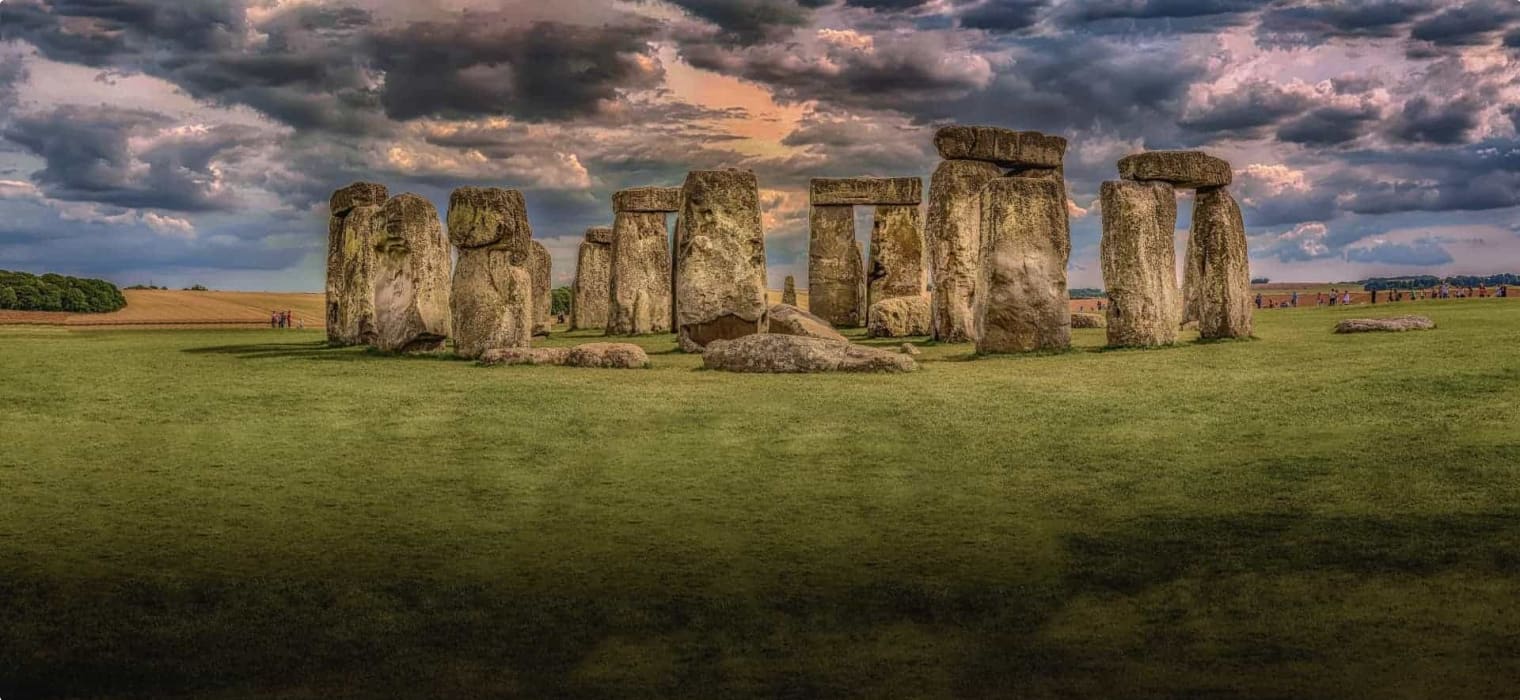
The People of Stonehenge
By Marco Stojanovik
The iconic Stonehenge stone circle is perhaps the world’s most famous prehistoric monument and Britain‘s greatest national icon. The standing stone circle monument, cemetery, and archaeological site located on Salisbury Plain has come to symbolise mystery, power and endurance. It has long fascinated archaeologists and historians, who still do not fully understand the story around it. For example, Stonehenge is known for ceremonial design and the fact that the first 1,600 feet of the avenue from Stonehenge is built on the summer solstice sunrise and winter solstice sunset – a phenomenon that may be because of sun worship, calendar keeping, or other purposes. Regardless of the lack of answer, this continues to fascinate visitors who wander around the concentric structures searching for answers.
Most scientists agree that Neolithic agrarians were the first people to construct a monument on the Stonehenge site in approximately 3000 BCE. The site was then built upon in later phases during the Bronze Age by the Beaker People, a new population of people who arrived in Britain around 2500 BCE. These people brought upon a seismic shift in culture, technology, ideology, and ritual, regarded for their use of distinctive Beaker pottery, funerary practices, and skills such as metalworking. Recent archaeological discoveries at Stonehenge particularly shed light on their lifestyle and use of the sacred site.
This article explores the transformation of Stonehenge and its people from the Neolithic into the Bronze Age, intended as background reading for Odyssey Traveller’s tours of English heritage. As a tour company, we conduct a private tour of Stonehenge with a tour guide during our 20-night Walking Ancient Britain Tour and our 22-night Rural Britain Walking Tour. Both are small group tours for mature and senior travellers, involving a day trip Stonehenge tour.

Neolithic Stonehenge
Around 5,000 years ago Britain was inhabited by a pre-industrial, Neolithic farming society consisting of small groups of people who lived in semi-nomadic communities spread across the landscape. Although these people did not typically form large population centres, they did come together to build massive structures.
The most well-known of these sites is Stonehenge, with construction of the earlier portion thought to have begun around 3000 BCE. The first monument at Stonehenge was basically a circular enclosure outlined by an inner and outer bank and a ditch to the northeast and a standing stone a bit away from the entrance. This is incredibly awe-inspiring, considering those who built it only used tools made of bone and stone.
The outer circle, now mostly destroyed, was made from earth and was about 380 feet (115 m) in diameter, 8 feet (2.5 m) wide, and 2 or 3 feet (o.6 to 1 m) high. The ditch was not uniform in size but was roughly circular and about 320 feet (98 m) in diameter, 20 feet (6 m) wide, and 4.5 to 7 feet (1.5 to 2 m) deep. The excavated chalky rubble from the ditch was then used to build the high bank on the inside. An impressive sight, it stood at least 6 feet (2 m) high, about 20 feet (6 m) wide and had a diameter of 230 feet (70m).
On the northeast of the circle, a 35-foot (10.5 m) gap in the ditch and bank marks the entrance into Stonehenge. The heel stone is set up here, marking the spot where one can see the sun rise on the horizon on the summer solstice. The heel stone is shaped naturally, about 20 feet (6 m) long and 8 feet (2.5 m) wide by 7 feet (2 m) thick. It is made up of natural sandstone called sarsen, thought to have originally come from Marlborough Downs, 20 miles (32 km) to the north of Stonehenge. There is also evidence that another stone once stood parallel to the heel stone, also erected at this time.
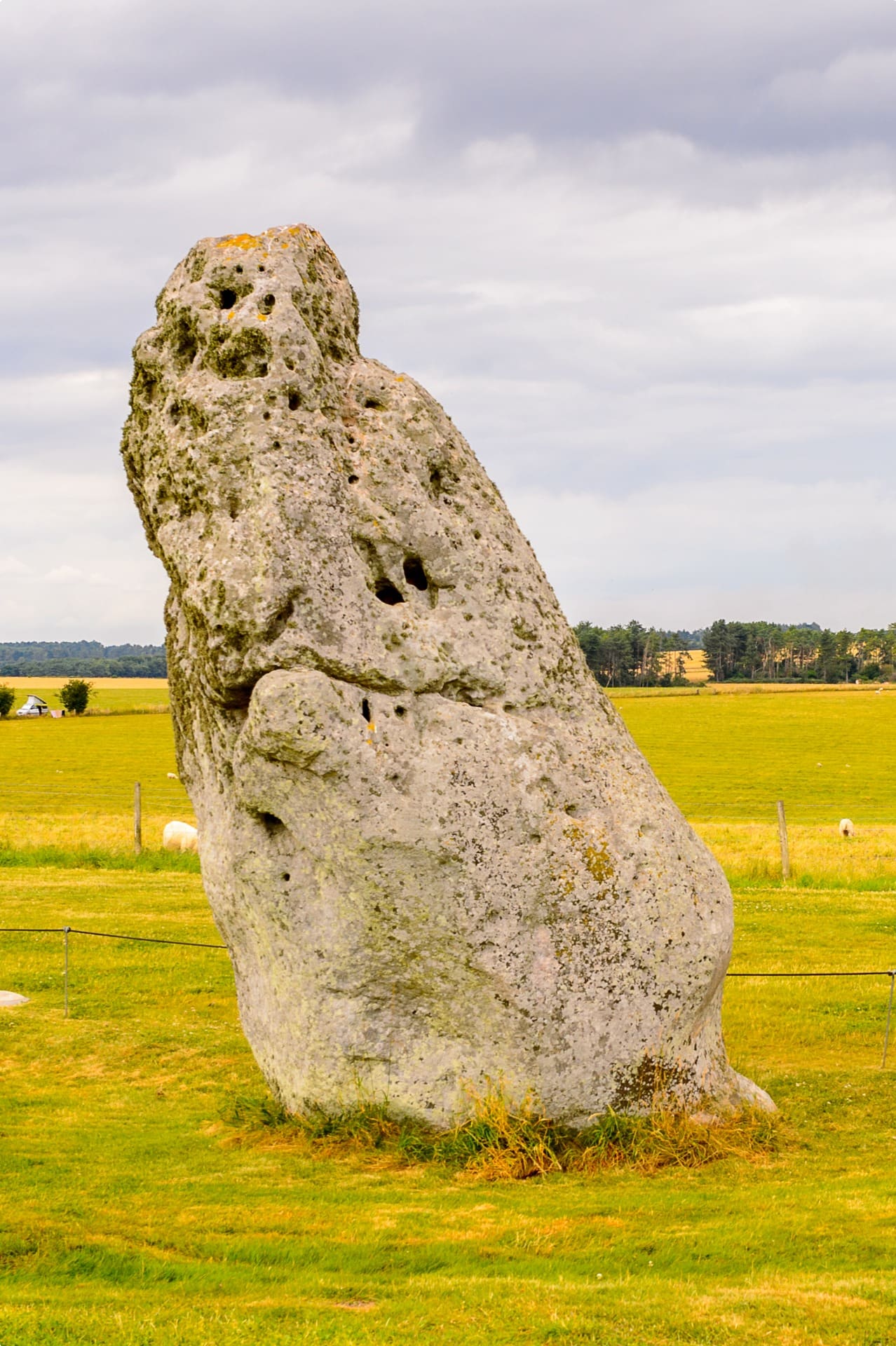
Just inside the circular bank, a circle of fifty-six pits known as the Aubrey holes were also dug into the chalk during this period. With an average depth of 1.06m (3.4ft), and seemingly almost immediately refilled, their exact purpose remains a mystery. It is thought, however, that they were originally used to support wooden posts or smaller bluestones.
The four Station Stones, of which only two survive, probably also date to this period, although the evidence is inconclusive. These stones, standing approximately on the circle of the Aubrey holes, formed a rectangle which, like the hell stone, aligned with the sunrise of the summer solstice. Of the two still standing, one is naturally shaped while the other is slightly tooled.
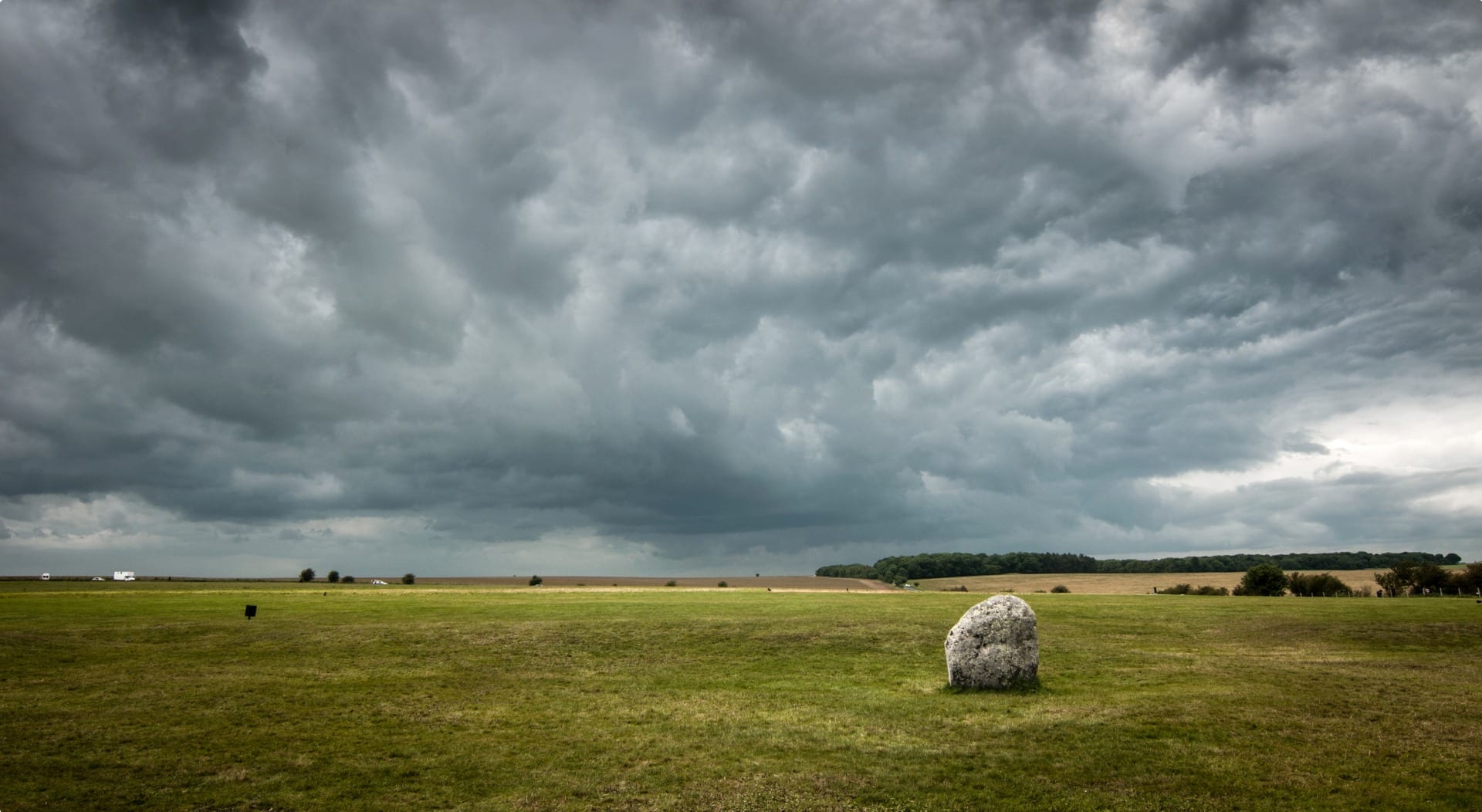
The Neolithic monuments like Stonehenge were presumably central to the people’s belief system and rituals. Indeed, archaeological evidence found by the Stonehenge Riverside Project in 2008 indicates that Stonehenge could have been a burial ground from its earliest beginnings. The dating of cremated remains found on the site indicate that deposits contain human bone from as early as 3000 BC, when the ditch and bank were first dug. Such deposits continued at Stonehenge for at least another 500 years.
Displacement of Britain’s Neolithic People
A new culture and way of life, known as the Beaker culture, spread to Britain from Europe towards the end of the Neolithic around 4,400 years ago. At this point, people began burying their dead with stylised bell-shaped pottery, copper daggers, arrowheads, stone wrist guards and distinctive perforated buttons.
For years experts believed it was just the culture which was exported to Britain and not the people themselves. However, recent evidence has revealed that the culture was indeed diffused by migration, with the Beaker people gradually displacing the Indigenous Neolithic farmers in Britain who originally built Stonehenge.
The evidence comes from the largest every study on ancient DNA, involving the analysis of more than 400 prehistoric skeletons from across Europe by hundreds of scientists and archaeologists in almost all the major laboratories in the field. The mammoth study suggests the Beakers were a distinct population who travelled to Britain from modern-day Holland to eventually replace 90% of the British gene pool. This means that modern Britons can trace just a small fraction of their ancestry to the people who built Stonehenge.
The reason for the displacement remains unclear. However, a separate study suggests a downturn in the climate around 5,500 years ago (3,500 BCE) pushed Neolithic populations into a thousand year-long decline. The populations would have been at their lowest around 2,500 BCE, precisely when the Beaker population seems to come in. Disease could have also played a role in the population shift, with the bubonic plague arriving with the new migrants in Britain and killing of the Neolithic populations.
Whatever the reason, the possibility of a violent invasion is doubtful. The DNA study found that the process of displacement was gradual, suggesting that it was peaceful, the newcomers living side by side with the locals over a period of up to 500 years. It seems that the new population settled areas of the landscape where the local Neolithic population weren’t living, the two communities only mixing and having children with each other occasionally.
Gradually though, the communities began to merge, first by sharing and adopting aspects of each other’s cultures. Then sometime around 4,000 years ago the two groups started mixing more liberally and having children together more extensively.
Who were Britain’s Bronze Age Beaker People?
The newcomers to Britain in the Bronze Age are known as the Beaker People due to their distinctive bell-shaped beakers decorated with impressed ornamental patterns. These were among the most treasured possessions of the people, who were buried with them, and have been excavated from graves for centuries.

The Beaker phenomenon has been documented across Europe in the late third and early second millennia BCE. The culture is believed to have originated in Iberia – in present-day Spain and Portugal – around 5,000 years ago, before spreading very quickly by word of mouth to different peoples in Central Europe. From here, it exploded in every direction – this time through the movement of people.
The people who entered Britain with the Beaker culture themselves seem to have originally migrated from the Eurasian Steppes to Central Europe. These nomads then continued to migrate into northwest Europe during the Neolithic, finally arriving in Britain around 4,400 years ago.
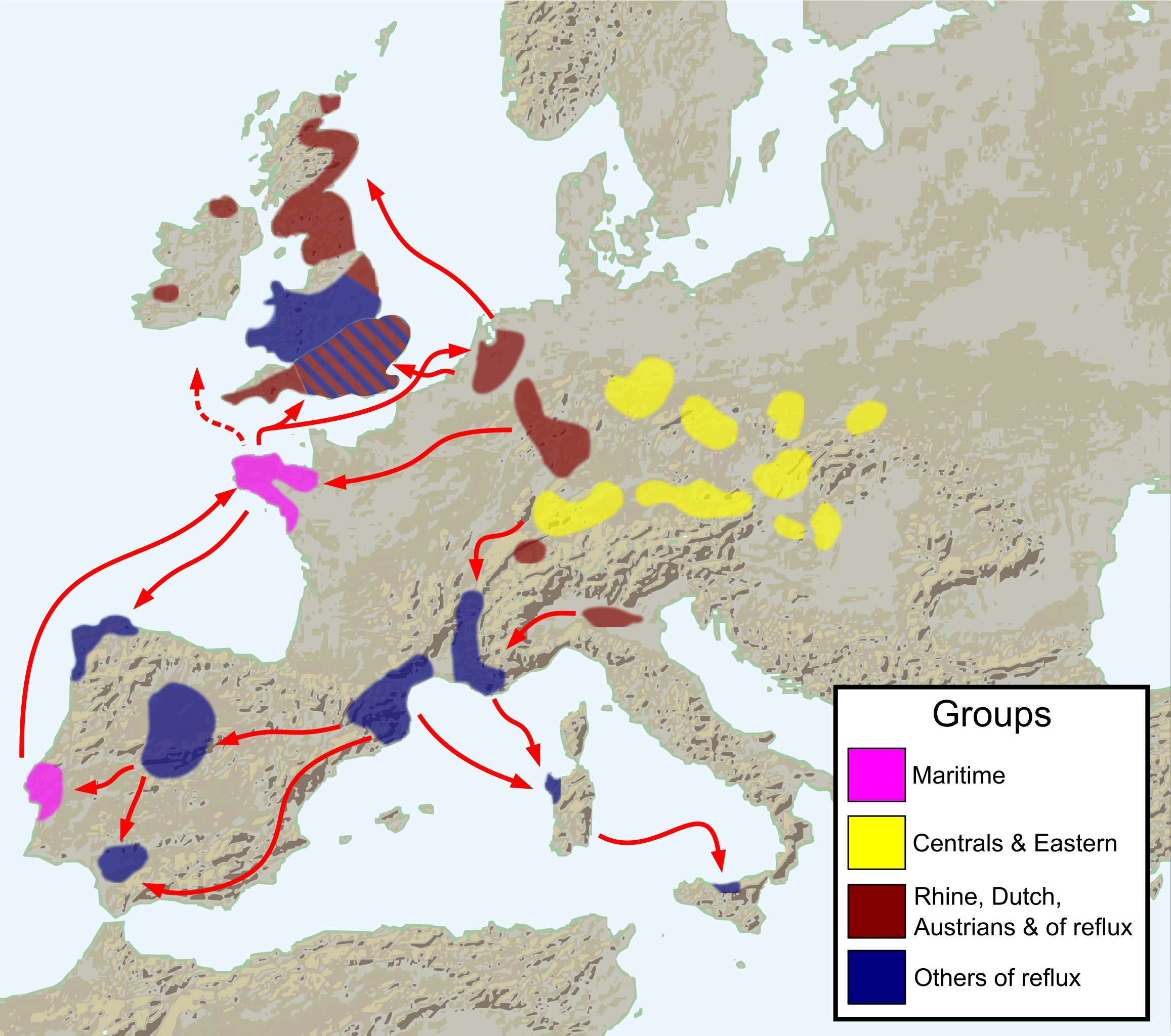
The Beaker people’s appearance was drastically different to the Neolithic population they replaced in Britain. They were more like white modern British people, with blue eyes, fair skin, and lighter hair in comparison to the creators of Stonehenge, who had brown eyes, olive-brown skin, and dark hair.
Further distinguishing them from the Neolithic societies is their association with the introduction of metalworking to Britain. From its place of origin in the Near East, knowledge of metal working had spread through most of Europe by this point. However, the Neolithic people of Britain had isolated themselves from the rest of the continent, remaining firmly in the Stone Age. The Beaker people changed this, bringing the skill of refining metal to the isles, first with the smelting of copper and then the smelting of bronze with its discovery around 2150 BCE. The Bronze Age had truly arrived in Britain.
The Beaker people were also farmers, cultivating flax and cereals, and introducing a pastoral pattern to the agricultural lifestyle of Neolithic times. Archery also played an important part in their lives, as evident in the stone wrist guards they wore to protect their arms from the string of the bowstring. They also armed themselves with flat, tanged daggers or spearheads of copper.
Unlike the Neolithic settlers, they buried their dead in individual graves. Their burials were mostly inhumation (full burial of the body instead of cremation) beneath earth mounds known as burrows. The buried individuals were generally accompanied by grave goods – pottery, jars, golden bucklers, bronze daggers, cups, necklaces, and sceptres in various stone and precious metals – indicating a belief in some kind of afterlife. Often the groups were clustered in groups, which suggests family cemeteries.
Sometimes these graves were placed very close to earlier Neolithic henges and monuments. This suggests that the Beaker people took advantage of sites already felt to be sacred, incorporating the monuments and parts of the local culture and customs into their own belief systems.
Bronze Age Stonehenge
Stonehenge is perhaps the most famous Neolithic sacred site repurposed by the Beaker People. Although they were not related to the people who originally built the monument, the newcomers continued to use it as a prestigious place to bury their dead and were responsible for the later phases of its construction deep into the Bronze Age.
Sometime in the period between 2400 and 2200 BCE, they began a process of rising two concentric circles of stones inside the henge, 35 feet from the centre. These circles were made up of at least 82 bluestone Menhirs (large, rough-hewn standing stones), weighing between two and five tons each and placed 6 feet apart. The largest bluestone of all, traditionally misnamed the Altar Stone, probably stood as a tall pillar on the axial line of the circles.
The bluestones are believed to have originally been part of a vast Neolithic stone circle at Waun Mawn in the Preseli Hills, Wales. With a diameter of 100 metres, it is identical to the ditch that encloses Stonehenge, and it is also aligned with the midsummer solstice sunrise. A series of buried stone-holes that follow the circle’s outline has been unearthed, with shapes that can be linked to Stonehenge’s bluestone pillars. One of them bears an imprint in its base that matches the unusual cross-section of a Stonehenge bluestone.
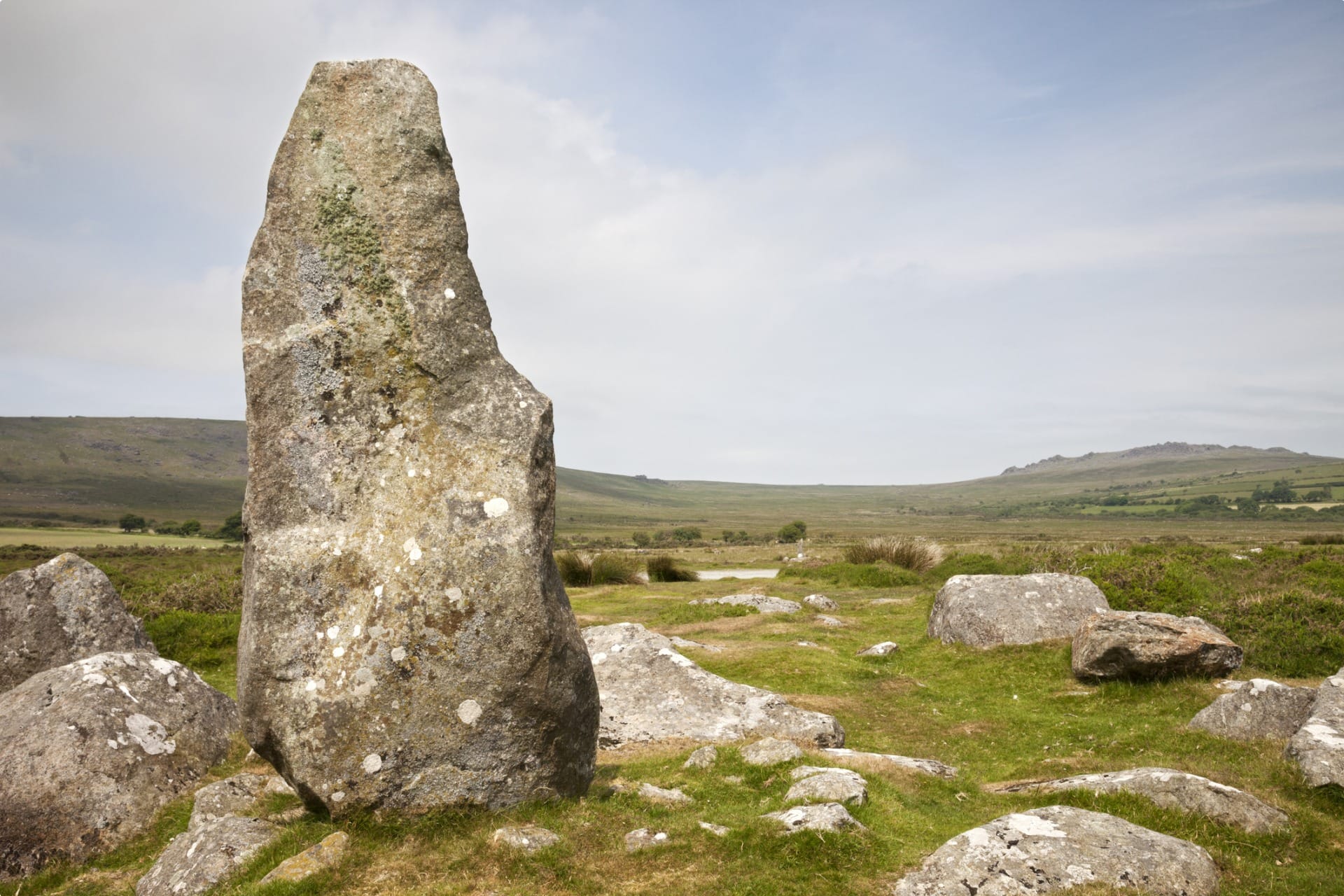
This evidence suggests that Stonehenge was originally built in Wales around 3,300 BCE, extracted from the nearby Preseli quarries, and venerated for years before being dismantled and painstakingly carried more than 140 miles (225 km) to Salisbury. There it was resurrected as a second-hand monument. Archaeologists believe that the transportation took place via boat over sea and river as well as sledge overland in a process that took over a hundred years to complete.
Next, around 2,000 BCE, 30 massive sarsen stones (weighing up to 50 tons) arrived on site and were arranged into the famous 100-foot diameter (30 m) ‘Outer Circle’. The sarsen stones are a type of silcrete rock found naturally only at certain locations around southern England. These ones were transported from the Marlborough Downs, believed to have been moved using sledges, ropes, and a great deal of manpower.
Within the Outer Circle, a horseshoe-shaped formation of five trilithons, known as the ‘Inner Circle’, was also constructed at this time. Each trilithon consisted of a pair of large stone upright supporting a stone lintel.
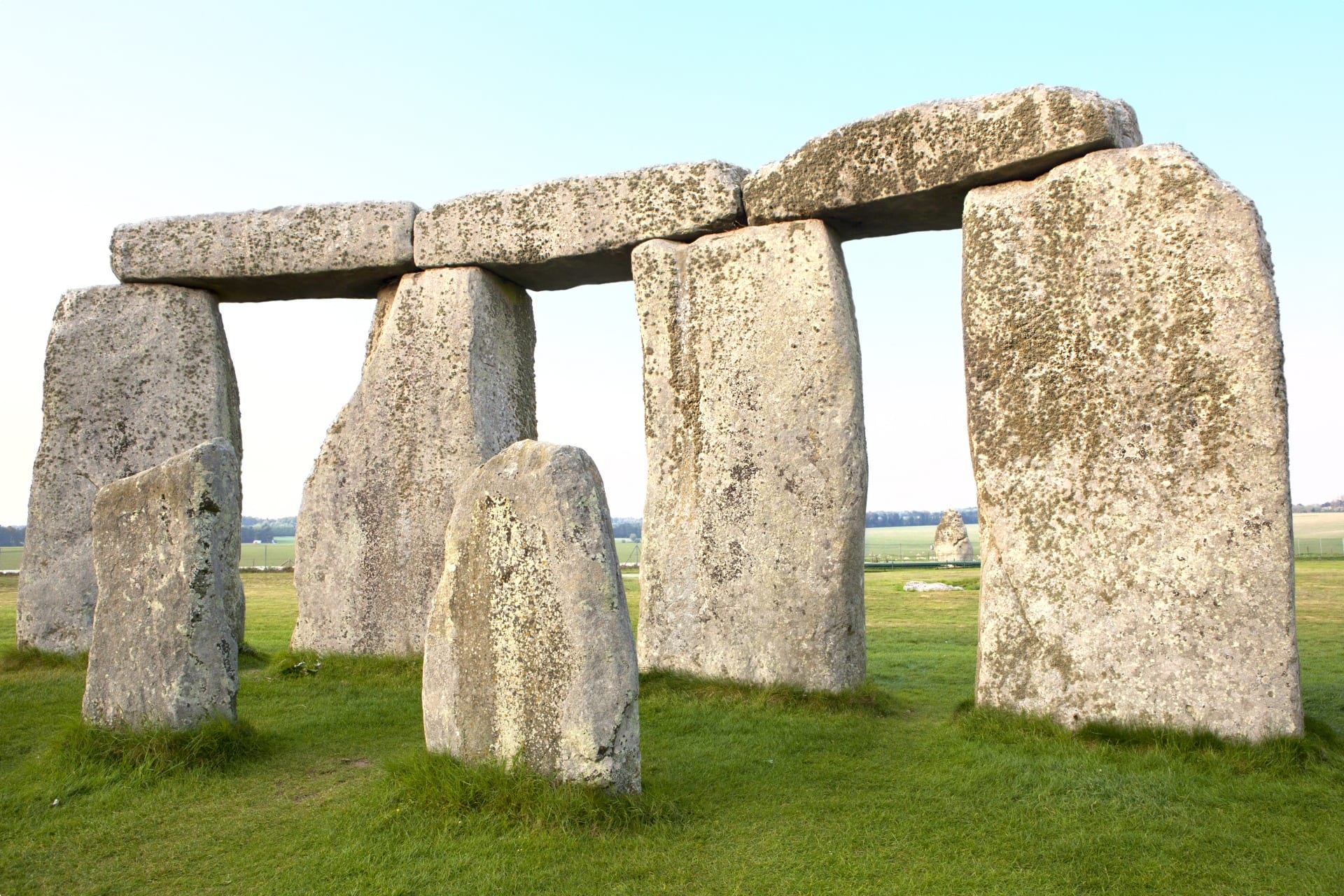
Bronze Age Discoveries at Stonehenge
In early 2021, archaeologists made several discoveries around Stonehenge shedding light on its use during the Bronze Age. The February, researchers began carrying out preliminary work on the site of a proposed new road tunnel beside Stonehenge, examining some 1,800 test pits and more than 400 trial trenches. Amongst the discoveries were Bronze Age graves, a mysterious C-shaped enclosure, and Neolithic pottery.
Several graves were unearthed just to the southwest of the Stonehenge circle and are believed to be of Beaker people. In one grave dating back 4,000 years was a female in her 20s, buried in a crouched position with a pot or beaker. Also in the grave was a fragment of a copper awl or needle and a small shale cylindrical object. The object is of a unique type believed not to have been found before and is speculated to have formed part of a staff or club.
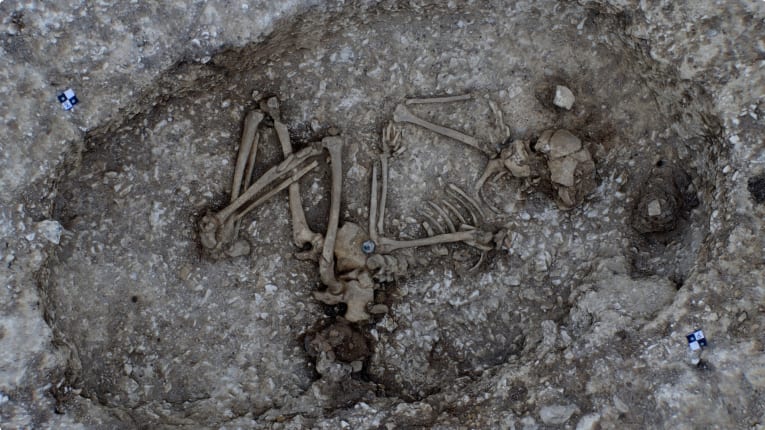
Nearby, the researchers discovered the grave of a baby, buried with a small, plain pottery beaker. All that remains of the infant are its tiny ear bones. The beaker pot is very plain, which is unusual for the Beaker people known for their ornate items. Experts believe the simplicity probably reflects the age of the person who was buried there.
A little further south, the researchers found the remains of the mysterious C-shaped enclosure – a strange pattern of buried ditches. A near-complete pot in one of the ditches dates the enclosure to the period in the middle to late Bronze Age, after about 3500 years ago. In this period, there was a settlement nearby and the enclosure is thought to have been a centre for industrial work to serve the settlement. This conclusion was based on the density of burned flint contained in the soil surrounding the area. The researchers believe it was here that probably “metal, leatherworking, pottery manufacture or crop processing was carried out”.
Apart from the Bronze Age discoveries, the archaeologists came across a group of objects scattered around the site dating to the late Neolithic period. These include grooved pottery vessels, worked flints for tools, and deer antlers. The pottery is through to have been left there by the people who built the famous stone circle or visited it. Researchers also unearthed ditches to the southeast of the monument that may be connected to nearby Iron Age fort known as “Vespasian’s Camp”.
Guided Tour of Stonehenge
Odyssey offers several small group tours that visit the UNESCO World Heritage Site of Stonehenge stone circle as well as the Avebury stone circle, both as a day tour, to provide a glimpse into the contribution they have to our understanding of history, our ancestors, and ancient stone structures as a prehistoric monument. While they remain shrouded in mystery thousands of years later, they are undeniably significant archaeological finds and represent the chance to learn more about where we come from.
Our small group tour with a tour leader give travellers the chance to enhance their knowledge of these structures with guided tours from experienced archaeologists of Stonehenge, Avebury and associated sites. This means you will not just learn the fascinating history of one of the most famous landmarks in Britain, but you will also discover some of the other interesting Neolithic features of the area.
In our Prehistoric Britain small group tour, the group spends three nights based in Salisbury exploring the sites and in the Walking Ancient Britain small group tour, we are in Salisbury for ten nights, enjoying walks along the Great Stone Way. This allows travellers to view a wonderfully sited Neolithic burial mound atop a hill at Adam’s Grave and enjoy breath-taking views across the Vale of Pewsey.
Salisbury is a medieval cathedral city in the southern English county of Wiltshire, around twenty minutes’ drive from Stonehenge and an hour from Avebury. It is a great base for exploring these Neolithic sites and an incredibly beautiful setting in its own right.
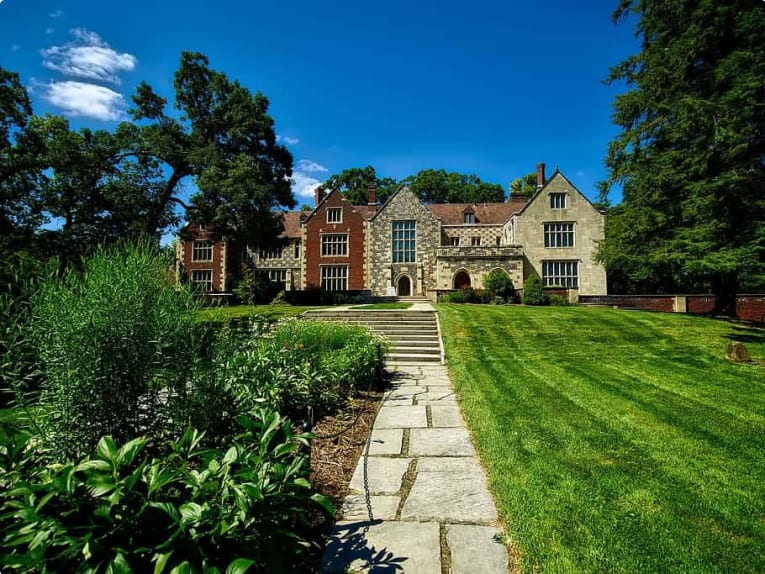
Odyssey Traveller has been serving world travellers since 1983. All tours provide an authentic and culturally informed travel experience, that goes beyond the usual tourist sites in favour of drawing out the hidden histories of our destinations. Our guides are chosen for their local expertise, and we move in genuinely small groups: usually 6-12 per tour. Our tours are all-inclusive, encompassing accommodation, attraction entries, and transport. For more information, click here, and head to this page to make a booking for a trip.
Articles about England published by Odyssey Traveller.
- The London Underground
- Victorian Women’s Fashion
- Queen Victoria’s Britain, Part 1 and Part 2
- Understanding British Churches
- Studying Gargoyles and grotesques
- Georgian Architecture
- London’s Victorian Architecture
For all the articles Odyssey Traveller has published for mature aged and senior travellers, click through on this link.
External articles to assist you on your visit to England.
- National Parks UK
- William the Conqueror (History.com)
- Queen Victoria
- The Royal Parks of London
- The Royal Mausoleum
Related Tours
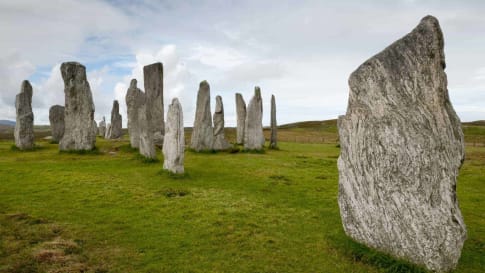
21 days
AugPrehistoric Britain small group history tour including standing stones
Visiting England, Scotland
This guided tour invites you to explore UNESCO World heritage sites at Skara Brae in the Orkneys, Isle of Skye, and Stonehenge in a prehistoric tour. This escorted tour has trips to key sites in Scotland, and the Irish sea in Wales such as Gower Peninsula and National Museum in Cardiff and England. Each day tour is supported by local guides.
From A$16,750 AUD
View Tour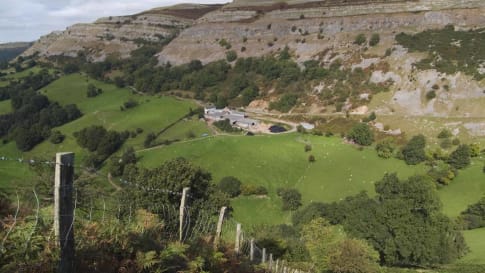
20 days
May, Sep, JunWalking Ancient Britain
Visiting England
A walking tour of England & the border of Wales. Explore on foot UNESCO World Heritage sites, Neolithic, Bronze age and Roman landscapes and the occasional Norman castle on your journey. Your tour director and tour guide walk you through the Brecon beacons, the Cotswolds and Welsh borders on this small group tour.
From A$13,995 AUD
View TourRelated Articles
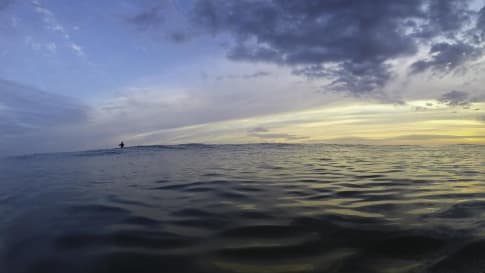
Atlantic Ocean and How it Shaped Ancient Communities In Europe
Article of interest for senior couples and mature solo travellers joining a small group European tour to Faroe Islands, Scottish Isles, Morocco or Portugal. Focus is on the early exploration of the Atlantic.

Exploring Britain's Prehistoric Past: The Definitive Guide for Travellers
Article on Britain's neolithic past for small group educational tours for senior couples and mature solo travellers interested in learning about Standing stones, burial chambers, Skara Brae and Stonehenge or Beaker people.

Highlights of Stonehenge and Avebury
Explore Neolithic Britain including Stonehenge, the stone circles of Scotland for example and Skara Brae. Material to support escorted small group tours for senior couples and mature solo travellers to Britain and Europe.
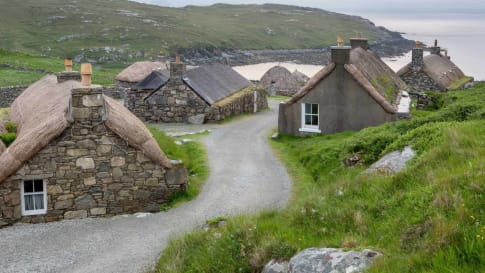
Islands of the Outer Hebrides: The Definitive Guide for Travellers
Scotland's Outer Hebrides are discussed in this article to assist the mature solo and couple in planning to visit Scotland and the British isles on a small group tour.

Lumps and Bumps: How to Read the British Landscape
The British landscape has been worked and re-worked. It is secrets of this palimpsest landscape is revealed through drainage patterns and prehistoric features all the way through to the modern day. These small group tours for mature and senior travellers examine the landscape from the Neolithic, to Roman, through the seven ages of Britain in walking tours and history tours of Britain.
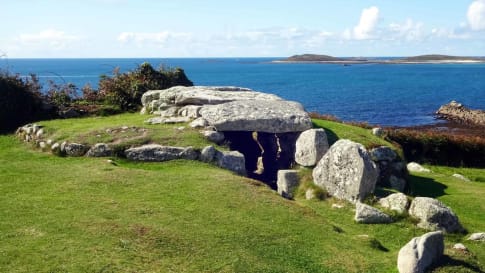
Neolithic Burial Chambers: Telescopes to the Stars
Neolithic Burial Chambers and the stars The calendar you have in your smartphone was once written in the stars. During the Neolithic or final period of the Stone Age, skies […]

New Discoveries about Britain's Stone Circles
Article about recent discoveries on stone circles in Neolithic Britain. Explore and learn on an educational small group tour for senior couples and mature single travellers to Scotland, Wales and England plus so much more including Australia.
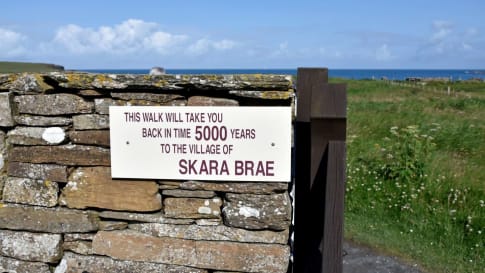
Skara Brae, Scotland
Article introducing Neolithic Britain and the trading routes to Iceland, the Faroe Islands and the Irish sea. Skara brae is included on the Scottish isles tour and the Prehistoric Britain program. Small group tours for senior couples and mature solo travelers.
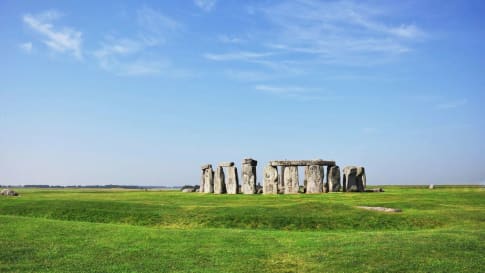
Standing Stones in Prehistoric Britain
Standing Stones in Prehistoric Britain Stonehenge, England, United Kingdom The standing stones of Great Britain continue to be the subject of research and archaeological hypothesis. Britain is not the only location where standing stones are…



